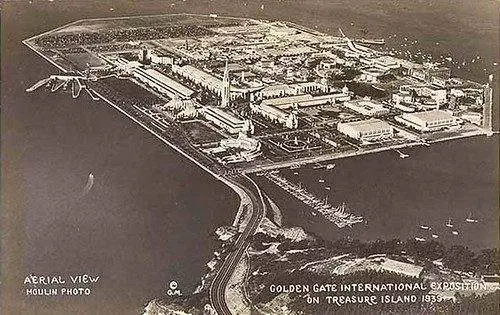Published in 1883, Treasure Island by Scottish author Robert Louis Stevenson is considered a pioneering adventure novel and a classic of children’s literature. Set in the days of sailing ships and pirates, it tells the thrilling tale of young Jim Hawkins who finds a treasure map and embarks on a perilous quest for hidden pirate gold. With its larger-than-life characters, exotic locales, and themes of courage, friendship and good versus evil, Treasure Island remains an enduring fictional world that has shaped popular perception of pirates.
Table of Contents
Plot Summary
The story opens at Admiral Benbow inn located by the English coastline where young Jim Hawkins helps his parents run the establishment. One day, a mysterious sea captain named Billy Bones dies at the inn after being presented with the Black Spot, a pirate summons. Jim finds Bones’ treasure map showing where notorious pirate Captain Flint had buried stolen loot on an island.
Squire Trelawney plans an expedition to recover the treasure. Jim joins the crew aboard the Hispaniola ship captained by Mr. Smollett. They hire Long John Silver, a one-legged sailor, not knowing he was part of Flint’s crew and plans a mutiny once ashore.
At sea, Jim overhears Silver’s conspiracy and warns his friends. Reaching Treasure Island, Jim flees the mutineers overhears their plans thanks to Ben Gunn, a marooned pirate. After dangerous encounters and a clash between the pirates and loyal seamen, Jim ultimately outwits Silver to uncover Flint’s treasure and transport it safely home.
Themes and Analysis
Key themes and ideas explored in the novel:
- Quest for adventure and pirate treasure
- Coming-of-age of Jim Hawkins into courage and responsibility
- Battle of good versus evil impulses in the human heart
- Thrill yet moral ambiguity of seafaring pirate life
- Father-son dynamic between the squire and Jim
- Ambition, greed and treachery as flaws of human nature
- Exotic allure of remote islands and the sea
With a first-person narration, the book evokes the spirit of seafaring adventures through Jim’s perspective. The island itself holds secrets and threats. Stevenson blends exciting action with subtler internal struggles.
The villainous yet magnetic Long John Silver represents a complex morally grey character. Through memorable characters and vivid settings, Stevenson crafted the archetypal pirate adventure tale.
Robert Louis Stevenson and Context
Robert Louis Stevenson came from a Scottish lighthouse engineering family but chose to become a writer against his family’s wishes due to ill health.

Key historical context:
- British naval dominance in the 19th century
- End of the Golden Age of piracy in the early 1700s
- The romance and myth around pirates continuing to capture imaginations
- Scientific advances in sea navigation and record of remote islands
- Adventure fiction gaining popularity especially among young boys
Treasure Island was first serialized as a children’s novel called Young Folks then published as a popular book that ignited a craze for pirate fiction. Stevenson crafted the quintessential pirate character in Long John Silver that resonates till today.
Analysis of Characters
Jim Hawkins – The adolescent protagonist and narrator whose coming-of-age story it follows. Jim grows into a brave, responsible leader.
Long John Silver – The ship’s cook who turns out to be the treacherous ringleader of the pirate mutineers. Yet he develops a bond with Jim.
Captain Smollett – The competent captain hired to command the Hispaniola. He is honest, courageous and authoritative.
Squire Trelawney – A wealthy landowner who finances the treasure hunt out of excitement. Pompous but good-natured.
Dr Livesey – The wise physician who treats Jim’s father and accompanies the voyage. He aids strategically in crises.
Billy Bones – The first mate of Flint’s crew who sets the story in motion. His drunken decline shows one path piracy leads to.
Read This Too: Don Quixote – Literary Masterpiece by Miguel de Cervantes
Influence and Significance
As a pioneering pirate adventure tale, Treasure Island has greatly impacted literature and popular culture:

- It defined and popularized quintessential pirate tropes – maps, black spots, tropical islands etc.
- Long John Silver became the iconic image of the crude yet likeable pirate antihero.
- Inspired countless pirate stories across novels, films, television, games and other media.
- Major characters like Jim Hawkins became fictional boyhood adventure archetypes.
- Its morally ambiguous depictions of pirate life are now standard for the genre.
- Marooned pirates and remote tropical islands entered the popular imagination through this book.
- Paved way for youth adventure fiction and coming-of-age stories especially for boys.
- Stevenson’s plotting and prose style established conventions for historical adventure fiction.
- Its themes on greed and temptation as human flaws sparked philosophical discussions.
- Pirates went from villainous sailors to romantic antiheroes after Treasure Island.
Read This Too: The Adventures of Huckleberry Finn – Mark Twain’s Masterpiece
Why Read Treasure Island
Here are some key reasons why Treasure Island remains so appealing:
- It pioneered and perfected the pirate adventure genre which remains captivating.
- Stevenson’s elegant prose and fast-paced plotting make it a page-turner.
- The exotic tropical island setting fascinates readers with hidden threats and promises.
- Larger-than-life Long John Silver ranks among the greatest villains in literature.
- Jim Hawkins makes an empathetic narrator and his coming-of-age story is moving.
- It explores complex moral issues of greed, ambition and courage.
- There is insightful psychological commentary beneath all the escapist fun.
- As an early youth novel, it balances entertainment and meaning.
- The novel brims with suspense, surprises and iconic scenes.
- Its archetypal characters, settings and tropes sparked a pirate craze.
Read This Too: Paraphrase Sonnet 18: Easy Shakespeare’s Sonnet 18 Rewrite
Conclusion
A seminal treasure hunt adventure that launched a thousand pirate ships, Treasure Island remains dazzlingly cinematic and insightful. Its iconic characters like Long John Silver and settings like Skeleton Island sparked endless nautical voyages across literature and film. Above all, Robert Louis Stevenson’s elegant prose makes this coming-of-age story a sheer pleasure to read.



1 Comment
Pingback: Across Five Aprils by Irene Hunt: Themes and Comprehensive Character Analysis - LitGram by MukeshRishit